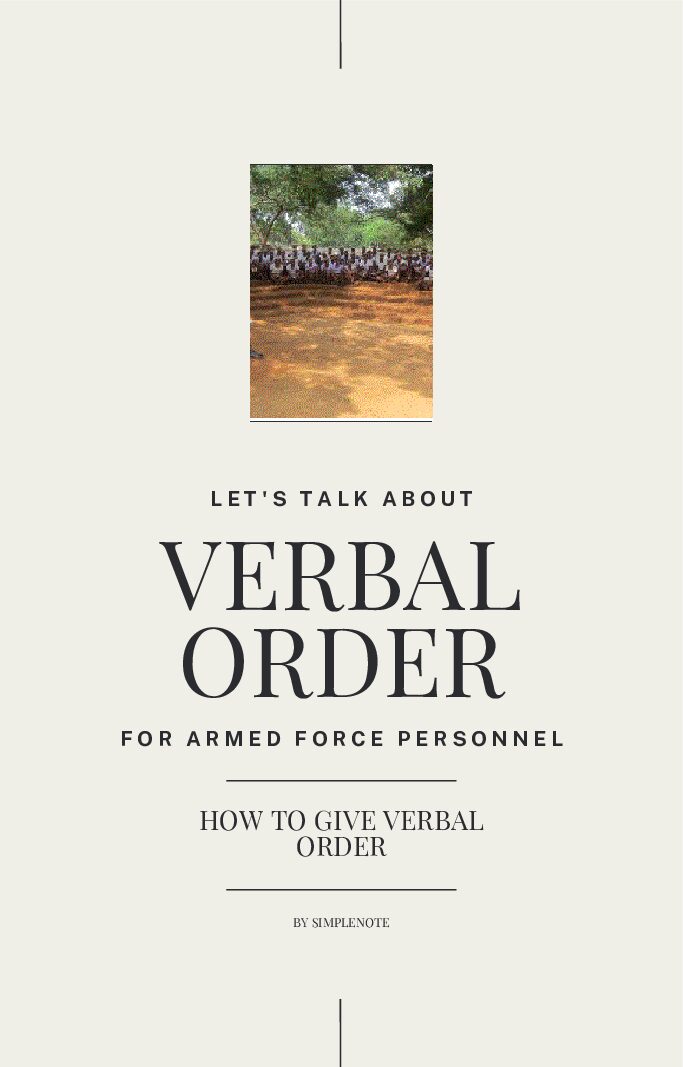7 Alarming AI Deepfake Cases: Nowadays, AI deepfake cases are increasing very rapidly. Initially, when AI deepfakes emerged, they were taken lightly by many countries, as they were considered just another tool for entertainment. However, as time passed, AI began to show its true colors. Deepfake videos and voices started being used to create law and order problems and to scam people.
Seeing all the illegal uses of deepfakes, the issue is no longer confined to technology alone — it now requires a legal approach to control the misuse and regulate the use of deepfake technology. Therefore, being a law graduate, I felt it was important to write about Alarming AI Deepfake Cases That Changed Global Policy Forever.
Let’s begin with the introduction.
1. Introduction – Deepfakes Are Not Just Online Tricks Anymore
In today’s digital world, it is getting harder to trust what we see or hear online. One of the main reasons is the rise of AI deepfakes. These are fake videos or audios made using artificial intelligence that look and sound real. At first, people thought they were just funny internet tricks. But now, things have changed. AI deepfake cases are no longer just entertainment. They have become serious problems. In some countries, they have even pushed governments to change their laws.
You might have heard about deepfakes copying celebrities. Or maybe you saw one that looked like a real political leader. Some deepfakes are so real that millions of people believed them. That is where the problem begins. When AI deepfakes go viral, they can damage reputations, spread lies, or even create confusion during elections or wars.
Across the USA and UK, many of these fake videos caused panic and legal battles. Policymakers had no choice but to respond. New laws were passed. Privacy rules were made stronger. Cybercrime units were trained to track fake content. These cases changed the way we think about online content.
This blog will walk you through 7 alarming AI deepfake cases that did not just make headlines but also changed global policy forever. These are real stories from the real world. You will see how deepfakes became a legal issue, not just a tech trend. Let’s begin with the first one – a deepfake that shocked millions and made the world sit up and pay attention.
2. The Obama Deepfake That Sparked Public Panic (2018)
Back in 2018, something strange appeared online. It was a video of former U.S. President Barack Obama. He looked serious. He spoke clearly. But there was a twist — it wasn’t really him. This was one of the first Obama deepfake videos that went viral. At first glance, it looked like a normal speech. But behind the scenes, it was a computer-generated fake.
The video was made by a team of researchers who wanted to show how easy it was to fool people. They used artificial intelligence to copy Obama’s voice and face. What shocked the world was how real it looked. Many people who saw the video had no idea it was fake. News channels picked it up. Social media spread it quickly. The first viral deepfake that caused concern had just entered public life.
People started asking questions. How many other deepfakes are out there? Can anyone now make a world leader say anything? What if someone uses it for crime or to spread lies? These questions reached the White House and Parliament in the UK. Security agencies took notice. Experts began warning that deepfakes could become digital weapons.
After this case, the U.S. Congress began talks on how to regulate deepfake content. In the UK, lawmakers raised the issue during tech and media committee meetings. This one video made people realize that AI deepfakes are more than funny tricks. They are tools that can shake public trust.
The Obama deepfake video that went viral opened the world’s eyes. And it was just the beginning. Let’s now look at another case — one that hit during an election and raised even deeper concerns.
3. The Indian Election Deepfake (2020) That Shook Voter Trust
In 2020, during the Delhi elections in India, a video of a political leader went viral. It showed him speaking fluently in languages he didn’t even know. People were shocked. Was this real? It wasn’t. This was an AI deepfake used in the Indian election. It looked authentic, but it was a carefully created fake video. It was made to appeal to different groups of voters by using their local languages.
For the first time, deepfakes entered the world of politics in a big way. While earlier deepfakes like Obama’s video had raised awareness, this one directly targeted voters. Many people believed the video was real because the quality was high, and it was shared quickly on social media platforms. Experts later confirmed that artificial intelligence had cloned the leader’s face and voice.
This political deepfake raised huge concerns about voter misinformation. What if fake videos were used to influence election results? What if they spread hate or false promises? The news quickly reached international media. Both USA and UK politicians referred to this case when discussing the dangers of AI in democracy. Cyber experts said this was a warning sign for all democracies.
The Election Commission of India had to step in and issue warnings. Technology companies were told to flag such videos and remove harmful content faster. This case started global conversations on how to stop political deepfakes and misinformation before they damage trust in elections.
The Indian election case showed that deepfakes are not just about celebrities. They can twist democracy itself. Next, we move to a Hollywood-style twist — a Tom Cruise TikTok deepfake that fooled millions across the world.
You may like this: 7 Powerful Ways Law Has Transformed Indian Society
4. The Tom Cruise TikTok Deepfake That Fooled Millions (2021)

In 2021, a series of short TikTok videos began making waves. The man in the clips looked exactly like Hollywood actor Tom Cruise. He was doing magic tricks, golfing, and joking around. It was charming. It was smooth. And it was fake. This became one of the most talked-about Tom Cruise TikTok deepfake cases ever seen.
Millions of people watched those videos without realizing they weren’t real. Even news anchors and tech reviewers were shocked. The person behind the videos later revealed that he used deepfake technology with the help of AI tools. While it wasn’t meant to cause harm, this viral moment exposed a big problem. If someone can fake Tom Cruise this well, who else can they copy next?
This case opened up a big discussion on celebrity deepfakes and legal risks. At the time, there were very few laws in place to protect a person’s face or voice from being copied by AI. Tom Cruise didn’t take legal action, but many celebrities and lawyers began raising questions. Who owns your digital face? Can anyone use it without asking?
In the US and UK, this case triggered debates on rights of publicity and AI content regulation. Lawmakers started pushing for rules that would make it illegal to use someone’s image without permission, even in a joke or parody.
The Tom Cruise TikTok deepfake case didn’t involve lies or politics. But it showed the scary power of deepfake technology. If fun videos can fool millions, imagine what harmful videos could do. Up next is a case that was no joke — a deepfake during the war in Ukraine that almost caused panic on the battlefield.
5. The Ukrainian President Deepfake (2022) During War
In March 2022, during the early days of the Russia-Ukraine war, a video appeared online. It showed Ukrainian President Volodymyr Zelensky. He was telling his soldiers to put down their weapons and surrender. The message was shocking. But within hours, it was confirmed — this was not real. It was a Zelensky deepfake from the Ukraine war in 2022.
You may like: What Is Passing Off? A Comparative Study Under Indian and US Trademark Laws
The fake video was posted on social media and even hacked into a Ukrainian news website. Some people believed it at first. But others noticed something was off — his movements were strange, and his voice didn’t sound natural. Ukraine quickly responded and told the public that the video was fake.
This moment showed the world how deepfakes are used in warfare. It was not just a funny trick or a celebrity copy. It was part of a strategy to break the enemy’s spirit and confuse the public. Military leaders, journalists, and tech companies all took this incident seriously. It raised fears that deepfakes could become weapons in modern war.
After this, NATO countries and European Union officials started discussing stronger rules for online content during conflicts. The Zelensky deepfake from the Ukraine war in 2022 made them realize that AI tools could be used to spread fake news in dangerous ways. Cybersecurity teams were trained to detect such videos faster. Fact-checking agencies also got more support.
This case proved that deepfakes are not only a problem for politics or entertainment. They are a real risk in national security. The next case shows another dark side — how deepfakes can hurt individuals by violating privacy in painful ways.
Let’s move on to a case from the UK where deepfakes crossed personal boundaries.
You may like: 7 Powerful Legal Changes in the One Big Beautiful Bill Act You Can’t Ignore (2025 Guide)
6. Pornographic Deepfakes in the UK That Changed Consent Laws (2023)
In 2023, the UK faced a disturbing wave of deepfake abuse. Fake nude and explicit videos of women — some celebrities, some private individuals — began to surface online. These weren’t real, but they looked painfully real. This became one of the most shocking UK deepfake revenge porn cases to ever hit the internet.
Many victims found their faces placed onto pornographic content without their knowledge or consent. These videos spread on social media and private messaging apps. For some, it led to public shame, bullying, and emotional trauma. The worst part? There was no clear law to punish the creators at the time.
This crisis pushed lawmakers to act fast. The public demanded protection. Feminist groups, privacy advocates, and legal experts joined forces. The government responded by tightening privacy laws and introducing laws against non-consensual AI videos. Under the new changes, sharing or creating deepfake sexual content without someone’s permission became a criminal offence.
These laws gave victims more power to report and remove such content. Social media platforms were also forced to act quicker when flagged. This moment became a turning point in the UK’s digital safety journey.
The UK deepfake revenge porn cases showed the world a painful truth. Deepfakes can steal your dignity and harm your mental health. They’re not just political tools or viral stunts. They can ruin lives in silence.
The UK’s response became a model for other countries, including the USA, where similar laws are now being drafted. But the fight isn’t over yet.
You may like : 5 Shocking Impacts of the One Big Beautiful Bill Act on Indians Abroad
7. The AI Voice Scam in the US That Emptied Bank Accounts (2024)
In 2024, a shocking story from the United States made headlines. A company lost over $240,000 in just a few minutes — not because of hacking or phishing, but due to a phone call. A scammer used artificial intelligence to copy the CEO’s voice. This case quickly became one of the most serious AI voice cloning scams in the US in 2024.
Here’s what happened. An employee got a call from someone who sounded exactly like their boss. The voice was calm, professional, and gave clear instructions to transfer company funds to an outside account. Everything sounded normal, so the money was sent. But later, it turned out that the real CEO never made the call. The scammer had used deepfake voice technology to trick the staff.
This deepfake voice fraud case in America shook both the business world and government agencies. It proved that deepfakes are no longer just visual. Now, even voices can be faked in real-time. The scam raised new questions about how to verify identity, especially during remote communication.
After this incident, banks and cybersecurity firms started updating their fraud detection systems. The U.S. Congress also began discussions on creating guidelines to protect people and businesses from AI voice cloning scams. Voice authentication and multi-step verification became more common in companies.
The case sent a clear warning. If a fake voice can fool a smart employee in a professional setting, it can happen to anyone. This deepfake wasn’t about fame, politics, or revenge — it was about money and trust.
Now that we’ve explored all 7 cases, let’s wrap up by looking at how these events have changed global deepfake laws forever — and what might come next.
8. How These Cases Changed Deepfake Laws Forever
After seeing how deepfakes fooled the public, invaded privacy, and even scammed companies, many countries realized one thing: the law had to catch up. These 7 cases became more than news stories. They triggered real and lasting global policy changes due to deepfakes.
In the USA, lawmakers introduced the TAKE IT DOWN Act in 2025. This new law allows people to quickly remove non-consensual AI content, especially fake intimate images, from the internet. Platforms are now legally required to take action within 48 hours. Deepfake victims finally have a clear way to fight back.
Meanwhile, the UK updated its Online Safety Bill to include strong protections against deepfake abuse. It is now illegal to use someone’s face, body, or voice in explicit AI-generated content without permission. This gave law enforcement the power to arrest offenders, even if the video was never real.
Other countries followed the same path. The European Union launched the AI Act, which sets strict rules on how AI tools can be used — especially in elections, law enforcement, and online content. These legal steps were all responses to the deepfake problems we covered in earlier sections.
These new deepfake laws in the USA and UK show that the world is taking AI seriously. For the first time, we’re not just amazed or scared. We’re doing something about it. And that’s a big step forward.
But laws alone won’t stop the misuse. Awareness, education, and smart tools are just as important. In the next section, let’s talk about how you can protect yourself from deepfakes and avoid falling for fakes in your daily life.
9. What You Can Do – Stay Safe and Informed
After reading all these shocking cases, you might be wondering — how can I protect myself? The truth is, anyone can be fooled. That’s why learning how to detect deepfakes is more important than ever.
Start with the basics. Watch the eyes. In many fake videos, blinking looks unnatural or too perfect. Next, pay attention to the mouth. If the lip movements don’t match the voice, it’s a red flag. Also, lighting on the face might look off, or there may be strange glitches around the edges. If something feels “off,” trust your gut and double-check.
There are also smart tools made just for this. Tools to protect against AI deepfake fraud include websites like Sensity.ai and Deepware Scanner. You can upload suspicious videos or links, and these tools will help you spot signs of manipulation. For fake voices, apps like Resemble.ai can analyze audio for signs of cloning.
If you’re a content creator, teacher, parent, or just a social media user, you should stay informed. Share only trusted sources. Avoid spreading videos that seem too shocking or unreal. It’s okay to question what you see — and it’s responsible to do so.
Also, talk about this with your friends, family, and co-workers. Many people still don’t know how deepfake technology works. The more we talk, the safer we all become.
Knowing how to detect deepfakes and using tools to protect against AI deepfake fraud is your best defense. In a world where fake can look real, awareness is your shield.
Let’s now bring everything together in the final section — and remind ourselves why this matters for the future of truth and trust online.
10. Conclusion – The Fight Against Deepfakes Isn’t Over Yet
We’ve walked through seven shocking real-world stories. From viral celebrity clips to election lies and voice scams, it’s clear: deepfakes are not just a tech trend. They’re a challenge to truth itself. These events sparked legal reforms around the world, but the fight isn’t finished.
Right now, lawmakers are still working to keep up. Tech keeps moving faster. That’s why deepfake awareness and future policies must stay active. The more people understand what deepfakes are and how they can be misused, the stronger our defense becomes.
Governments have taken steps. The USA passed the TAKE IT DOWN Act. The UK updated its Online Safety Bill. The EU created the AI Act. These are strong beginnings. But new questions are rising too. What happens if AI becomes even better at faking emotions, live speech, or real-time video calls? That’s where what’s next in deepfake technology and law becomes so important.
This journey isn’t about fear. It’s about being ready. As more people learn to spot fakes, and as policies grow stronger, deepfakes will lose their power. But we need everyone not just tech experts or lawyers — to stay alert.
So, if you’ve made it this far, you’re already part of the solution. Keep questioning. Stay informed. And help others understand that not everything online is as it seems.
The truth is worth protecting. And with knowledge, tools, and smart laws, we can all play a role in defending it.
FAQ: Understanding Deepfakes and the Global Response
1. Is there technology to detect deepfakes?
Yes, there are several new tools and systems designed to spot deepfakes. These include AI-based detection software that can scan videos, images, and voices for manipulation. Platforms like Microsoft’s Video Authenticator, Deepware Scanner, and Sensity AI are leading examples. As deepfakes grow more advanced, detection tools are becoming more necessary. Using technology to detect deepfakes is now part of most media companies’ and governments’ defense plans.
2. What are the threats of deepfakes?
Deepfakes can be dangerous in many ways. They can:
- Spread fake news before elections
- Damage someone’s reputation with fake audio or videos
- Be used for scams or blackmail
- Start conflicts using fake political messages
These threats are why deepfake awareness and future policies are becoming urgent priorities for the USA, UK, and other countries. Knowing how deepfakes are created and shared helps stop them before they cause harm.
3. What are the disadvantages of deepfakes?
Deepfakes make it hard to trust what we see online. They can:
- Make false stories look real
- Cause panic or confusion
- Hurt businesses or celebrities
- Lead to unfair legal problems
One big disadvantage is that deepfakes blur the line between real and fake. That’s why new laws are being created and tools to protect against AI deepfake fraud are being developed.
4. What are the challenges posed by deepfakes?
There are many challenges. One is legal — current laws weren’t made for this kind of technology. Another is technical — deepfakes are improving so fast, it’s hard to catch them all. Social media platforms also struggle with spotting and removing fake content in real time.
These are just a few reasons why people are asking, what’s next in deepfake technology and law? Governments, companies, and regular people all need to work together to find long-term solutions.
![]()









